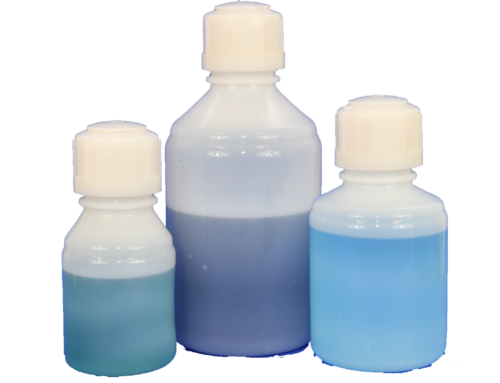What are fluoropolymers and how are they used?
We get quite a few questions about fluoropolymer plastics and how they’re used in bioprocessing. Where are they already being used? Which material is suited to what applications and what are the benefits of each?
We’re going to dig a little deeper into fluoropolymers, what they are, their properties and – most importantly – why they matter to bioprocessing.
First – what do fluoropolymers do? Simply put, they play a critical role in the storage, freezing and shipping of critical bioprocess fluids. Fluoropolymer plastics may be used as:
- Gaskets and diaphragms for pure steam and pure water systems and distribution loops
- Coatings for stir bars
- Parts used in impeller systems
- Coatings and matrix for filter membranes
- Coating on final product vial stoppers
- Pharmaceutical product storage bottles or vials
Of course, fluoropolymers aren’t all created equal or suited to all applications. Our lineup of fluoropolymer products is made from a material called PFA (perfluoroalkoxy). It’s melt-processable, allowing it to be injection or blow-molded to create a number of products, such as our Purillex® range bottles and stability vials.
PFA also has the highest working temperature range and purity of any fluoropolymer material – key characteristics for storing and shipping bulk pharmaceutical products.
What are the main benefits of fluoropolymers for bioprocessing?
Some of the most common issues with existing storage solutions for critical material, like bulk final product, can usually be traced back to the material selected for the containers.
For starters, inferior container materials can fail during shipping and storage – leading to product loss. Products can become altered due to chemical contamination and a lack of chemical stability – especially when dealing with acids, bases and solvents. Critical materials can also absorb to the container surfaces, making it difficult to recover that product after storage.
Fluoropolymers, on the other hand, are superior to conventional plastics used in bioprocessing for several reasons:
- They’re non-reactive with virtually every chemistry and have very low or no measurable leachables
- Fluoropolymers are non-stick and don’t absorb biological materials
- Very high thermal stability means an extensive service temperature range as high as 200 degrees Celsius and as low as liquid nitrogen ( -196 degrees Celsius).
- Fluoropolymers offer unmatched durability to the point where they’re virtually unbreakable
Want to learn even more about fluoropolymers for bioprocessing? Download and check out our full technical note for the complete story around fluoropolymer properties, uses and the most commonly used types of fluoropolymers.




